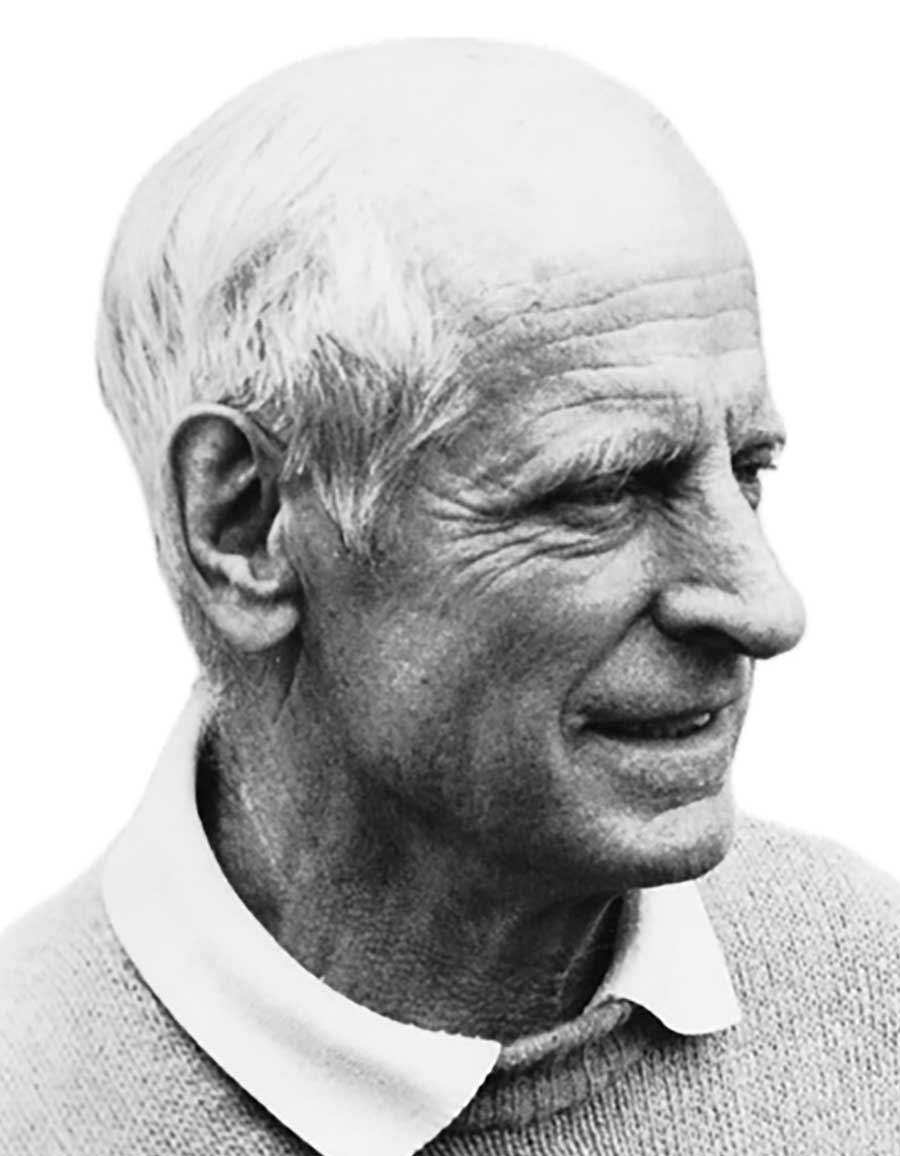Alfred Edward “Bill” Luders Jr.
New York, New York
December 31, 1909
– January 31, 1999
Searching for an Advantage
Alfred Edward Luders, Jr, informally known as Bill, was born one year after his father established a boat yard in Stamford, Ct. Luders was inspired at an early age to follow in his father’s footsteps. He attended Webb Institute of Naval Architecture for a brief time but had to drop out due to an illness. He never returned to college, but rather went to work in his father’s boatyard.
Luders was an innovative yacht designer and builder. He also worked with chemists to create effective bottom paints for racing yachts. All the 12 Meters of that era used the anti-fouling paint Bill created with the Regatta Paint Company called “Epoxy Bronze,” which provided a strong, smooth surface. He was a successful racing sailor too, which helped him understand how to design fast boats. Luders’ early victories were in a class of 14-foot dinghies called the Redwing. At the age of 19, he won the Long Island Sound 6 Meter Championship in 1928 and again in 1930. The boat was named Totem, and he was the designer. The success of Totem helped launch his career: Luders was involved in the development of the International One Design, a class that is still actively raced today.
During World War II, the Luders boatyard built minesweepers and other patrol craft for the war effort. After the war, he created the Luders 16, which was a very popular racing boat with more than 200 built. In 1938, he designed and built the Luders 44 as a training boat for the U.S. Naval Academy with the first fleet of 44s built out of wood. In the 1960s, the Naval Academy’s next fleet of Luders 44s were built out of fiberglass. Late in his career, Luders built over 700 Sea Sprites designed by National Sailing Hall of Fame inductee Carl Alberg.
Bill Luders was the first to use epoxy resin in hull construction. The Luders yard built the 12 Meter Weatherly for the 1958 America’s Cup trials. Although the boat did not win that season, Bus Mosbacher and a young crew from Long Island Sound sailed Weatherly to perfection in 1962 and successfully defended the America’s Cup. Luders believed in scientific research to create fast yachts, and spent considerable time tank-testing his concepts. Luders designed American Eagle for the 1964 America’s Cup match, which ultimately lost in the final defense trials to Constellation. Five years later, 31-year-old Ted Turner purchased American Eagle and won many major ocean races with her. Turner was named Yachtsman of the Year two times for his successful American Eagle campaigns.
Luders carefully studied the handicap rating rules to try to find ways of gaining an advantage over other boats. He experimented with a yacht named Storm by using different rigs to see what configuration worked best to the CCA handicap rule. Storm was rigged as a ketch with a huge mizzen and later converted to a sloop with a small mainsail and a big genoa. Luders was always searching for a way to create a faster yacht.
~ Gary Jobson


